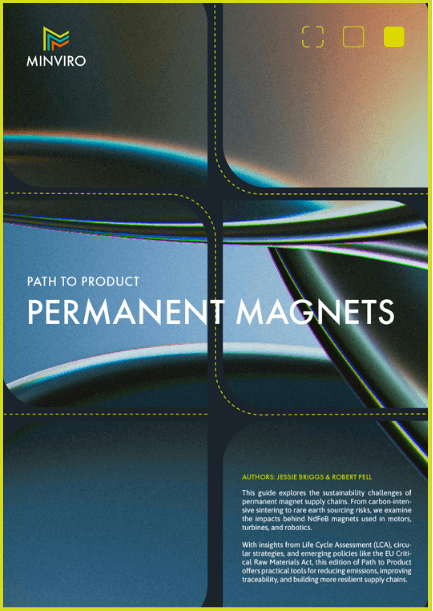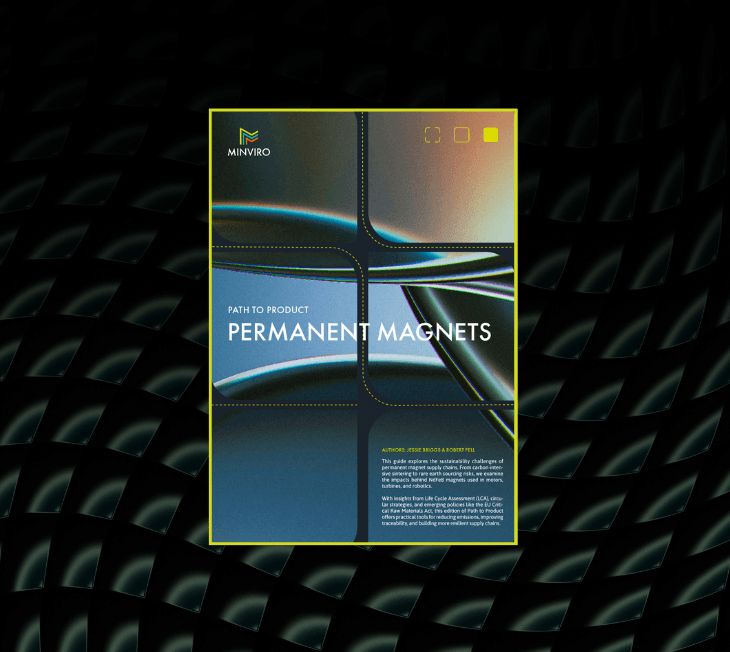- solutions
- industries
- about us
- resources
Client Resources
Path to Product: Sustainable & Compliant Permanent Magnet Supply Chains
By Robert Pell, Jessie Briggs
Reduce carbon, improve traceability and align with CRM, DPP and EPD rules. Minviro’s latest guide maps the hidden environmental impact of NdFeB magnets, from rare earth extraction to magnet assembly, and outlines strategies for circularity, compliance, and risk mitigation.
Download
The outline
What's inside the guide
Explore the environmental impact of permanent magnets used in EVs, turbines, and motors. Understand lifecycle approaches, material risks, and strategies for traceability and circularity.
This PTP document is focused on permanent magnet supply chains.
Lifecycle carbon impacts of permanent magnets
Permanent magnets, especially those containing rare earth elements (REE), are integral to motors, turbines, and robotics, but their production is highly carbon-intensive. This guide presents findings from life cycle assessments (LCA) that quantify emissions across the supply chain—from rare earth extraction to magnet production. It highlights how coal-based electricity in regions like China significantly amplifies emissions and identifies opportunities to reduce these impacts through cleaner energy sources and efficiency improvements.
Risks in sourcing rare earth elements (China & Myanmar dependence)
Supply risks are a growing concern due to the geographic concentration of rare earth mining and processing in China and Myanmar. The guide details how this reliance creates ESG vulnerabilities, including geopolitical risk, environmental degradation, and social impacts. It also outlines emerging supplier regions and midstream diversification efforts as potential mitigations.
Role of recycling innovations
Recycling of rare earth bearing magnets remains limited but is increasingly viable due to process innovations like hydrogen decrepitation and magnetic separation. The guide explores how OEMs and recycling firms are pioneering recovery from hard disk drives, motors, and turbines. These circular approaches support EU recycling targets and reduce reliance on critical virgin materials.
Compliance readiness for CRM Act, DPP, and IRA policies
New policies, including the EU Critical Raw Materials Act, Digital Product Passport, and U.S. Inflation Reduction Act—require companies to prove traceability, recycled content, and sustainable sourcing for materials like Nd, Pr, Dy, Fe and B used in magnet products. The guide outlines how LCA and supply chain mapping can prepare businesses to meet these requirements and turn compliance into a competitive advantage.
Alternative materials and designs to reduce REE dependency
The guide assesses opportunities to substitute NdFeB in certain applications with ferrite or SmCo magnets and improve magnet design using techniques like Halbach arrays. These alternatives reduce critical raw material use and improve recyclability, offering a pathway to resilience amid tightening resource regulations and market pressures.
download
Get access today
Fill in the form below
Download
